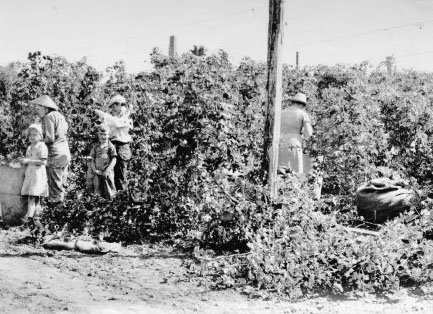World Events
- The war: In June (D Day), 176,000 Allied troops assault a 60-mile German front at Normandy the largest amphibious operation in history. Paris and Rome are liberated. In Amsterdam, a Nazi informer reveals the Frank family hideout. By July the Japanese are retreat from their conquests in British and American Pacific Island possessions.
- This year, a rail strike to halt Nazi troop movement in occupied Netherlands fails. Germans halt food supplies and 20,000 Dutch civilians die of starvation.
- David Ben-Gurion proposes the One Million Plan for a Jewish exodus form Arab and Muslim countries as well as from Europe to the British Mandate of Palestine.
- President Franklin D. Roosevelt is elected for 4th term.
- Celebrities: Prince Rainier comes to power in Monaco. Young Elizabeth Taylor becomes a film star with “National Velvet”. Popular bandleader, Glenn Miller, is lost at sea.
- 1st Lt. Jackie Robinson is arrested for not moving to the back of an Army bus. The United Negro College Fund is incorporated in the U.S.
- The pop singer, Bing Crosby turned to films this year, winning the Academy Award for “Going My Way”. Prize winning book: Journey in the Dark, Martin Flavin.
In Salem
Salem’s war dead numbered 75, including 31-year-old Asahel Bush V, war correspondent in the Pacific. Curly’s Dairy utilizes a horse to pull its delivery truck and carpooling conserved gas. Camp Adair soldiers moved out for overseas duty and 200 Italian POWs take up residence in the barracks, guarded by a small crew of soldiers. Their help, and that of later German POWs, enhances the local workforce of women and children harvesting crops. The Japanese relocation camps are closed and former residents can return: only 7 of the 250 come back to Salem. The canneries run at full capacity, causing severe pollution of the Willamette. Two disastrous cannery fires close out the year with exploding cans.
When you visit
The rich soil of the Willamette Valley was a major attraction of the pioneers who had suffered the perils of the mid-nineteenth century Oregon Trail to set up new homes here. In the first half of the twentieth century, agriculture was a major industry with working in the fields a family enterprise. Many Salem residents who were children and teenagers in the years of World War II have fond memories in the comradeship of catching the bus to going out working in the fields with their young friends. This was not confined to those families in financial need: there was no social or ethnic barrier that kept parents from allowing their children to work picking crops to earn their pocket money. It was perhaps the memory of the Depression years that made any labor so valued. With new agricultural practices and the increasing prosperity of families, this practice ended. The canning industry, for which many of the crops were raised, declined with the advent of frozen foods. Many of the former farmlands and orchards are now filled with residential neighborhoods.
Other events
 |
| Salem in the early 1940s |
- By this year, on the new North Capitol Mall, the Oregon State Library and the gardens have been completed. Four Court Street residences of “Piety Hill” have been demolished for that project. These had been known for their prominent Salem family names: Kay, Patton, Rockenfield/Bean, and Duniway/Lochmund. Notice houses nearer and on Capitol Street, as well as those between Chemeketa and Center Streets, are still intact, but will begin to be demolished between 1848 and 1957.
- The funeral of Senator Charles McNary is conducted in the House Chamber of the Capitol. In the Senate, McNary had helped to pass legislation that led to the construction of Bonneville Dam and worked on agricultural and forestry issues. He also supported many of the New Deal programs. McNary was the Republican vice presidential candidate in 1940, on the losing ticket with presidential candidate Wendell Wilkie. McNary was a justice of the Oregon Supreme Court from 1913 to 1915 and previous to that had been dean of Willamette School of Law.
- The groundbreaking for the Alumina Plant is a signal that Salem is inviting new post-war industry. However, the plant was not completed until 1946. It contained a fertilizer plant for a few years, but was razed in 1955-6. The need for aluminum was not as urgent by the time the facility was completed.
- Dr. Morse, a prominent local physician, dies. He was married in January of 1899, to Ethel Elaine Cusick, whose father had been a member of the first graduating class in the Willamette University Medical School in 1867. The marriage lasted only seven years, however; Mrs. Morse and an infant son died of an infection in March, 1906. John E. Davis, who chronicled Dr. Morse’s life for the Marion County Historical Society in 1985, said the physician promised his dying wife that he would never remarry. He remained true to that vow and lived with the late Mrs. Morse’s parents until their deaths. Dr. Morse and Dr. Charles H. Robertson began a joint practice in 1903. It had grown to eight physicians by the start of World War II and is today The Doctors’ Clinic.Informed by continuing medical education at the Mayo Clinic in Minnesota and in New York City, Dr. Morse became a vigorous advocate of improved sanitation in Oregon. He served 20 years on the State Board of Health, including a term as its chair, and was president of the Oregon Medical Society in 1927. He also took part in several national commissions that worked to improve the quality of medical practice in the United States. Dr. Morse was a pioneer member of the American College of Surgeons.
- By this year, on the new North Capitol Mall, the Oregon State Library and the gardens have been completed. Only four Court Street residences of “Piety Hill” have been demolished. These had been known for their prominent Salem family names: Kay, Patton, Rockenfield/Bean, and Duniway/Lachmund .
- On the Willamette University campus, a football field is behind Waller Hall and the campus extends south only to the railroad track at Trade Street. In 1972, when the new Civic Center is constructed, the railroad track in Trade Street is removed, relieving much of the noise that disrupted classes. Urban renewal that included Pringle Parkway and expansion of the Willamette campus in the 1980s changed the landscape even more.
- The Salem Public Market is founded at Rural and 12th Streets.


7 Comments